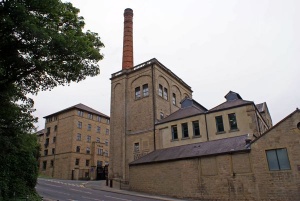At this morning’s Scrutiny Board meeting, an application was heard from councillors John Illingworth and Linda Rhodes-Clayton for a reconsideration of the Executive Board decision to proceed with a barbeque area on Woodhouse Moor. During the course of the meeting, Councillor Mick Lyons asked, “If this is a trial, is it going to happen all over?”
This produced the following response from the councillor with responsibility for Parks and Countryside :
John Procter (Con) Mick Lyons is right. A few years ago disposable barbeques weren’t available. They’re an emerging phenomenon – cheap and easy. Parks were to cater for people who didn’t have gardens. Young people in the flats that have been built in the city centre want to go and have a barbeque. Other areas with city centre parks also have problems with barbeques – we’re at the start of something. When large numbers of our constituents are demanding something, we’ve got to listen. How did we think we could stop this ?
As a result of Councillor Procter’s statement, Labour councillors expressed concern for the city’s other parks :
Brian Selby (Lab) John Procter says “this is an emerging issue.” Looking at the flats that have gone up in Roundhay, there should be a trial at Roundhay Park, and at Temple Newsam. This seems to be happening because students enjoy it. Is this why Woodhouse Moor has been allowed to go ? Are we saying it’s too difficult with so many students ? Isn’t this the law of taking the line of least resistance ?
Tom Murray (Lab) It’s worrying that John Procter said that this is an emerging problem which could affect all our parks. So our policy at this stage should be that we will enforce our current byelaws. I’ve heard from residents about the trial that they would like. It embraces all the things that John Procter’s trial does. We’re talking about education, signage, and education. We could market it as “Parks for picnics.” Looking at this picture, I don’t see any criminals. Enforcement would be easy. The message would be “We have parks for picnics, not parks for barbeques”.
Unofficial minutes of the Scrutiny Board meeting 16.9.09
(Photo courtesy of Simon Grubb)









